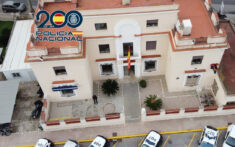Coca is a typical food of the Valencian region, and in Dénia it is easy to find in most ovens and in some traditional restaurants. Its ingredients are very Mediterranean, colorful and simple, like anchovies or espencat.
Without a doubt, it is one of the most characteristic appetizers of the capital of the Marina Alta, offering a wide variety of flavors to the palate. "You have to be open to your imagination," Pep Romany, a Dianense expert in the production of cokes and owner of the Pont Sec restaurant, the first in the Valencian Community to serve cokes on a menu, explains to this newspaper.
From
According to different historical evidence, the origin of Valencian coca dates back to the Crown of Aragon, which covered the period between 1164 and 1707. It seems that it was a very popular dish at that time and that it arose from the remains of bread dough. .
"The oldest reference to cocas is in the municipal archive of Dénia and is dated around 1660," explains Pep.
In addition, it is a controversial food, since it could have been the predecessor of pizza; Even international chef José Andrés has said publicly that he supports this theory. The truth is that Naples was conquered by the Spanish: in 1442 Naples and Sicily surrendered to Alfonso V the Magnanimous and were annexed to the Crown of Aragon.
Experts indicate that it is likely that with the migration of the Spanish population to that territory, the coca recipe was passed on. "Alfonso V's troops were from the Navy and Safor and one of the things they imposed was coca," says Romany.
From this base, the pizza we know today would emerge in the Neapolitan territory, invented by Raffaele Esposito in 1889. In fact, the classic pizza of Naples does not contain cheese, just like coca.
On the other hand, Pep highlights the difficulty that coca currently has in competing with pizza, which "has gained ground" for one reason: pizza is made on the spot, while in many ovens and restaurants coca They are served without being finished and lose properties.
Recipe
To prepare the true Valencian coca, few ingredients are needed and the recipe is also very simple. You just have to mix 125 milliliters of warm water with about 25 grams of fresh yeast in a bowl. Then you just have to add about 400 grams of strong flour, 10 grams of salt and about 100 milliliters of olive oil and stir until you have a homogeneous dough. Now let it rest for one to two hours in a container or under a kitchen towel until it doubles in size.
Once the dough is ready, you just have to cut it according to the number of cakes you want to make and the preferred shape, roll them out with the rolling pin and place the desired mixture on top. Before this, you will have to preheat the oven to 180ºC. It will have to be baked at the aforementioned temperature for about 30-40 minutes until the coca is golden.
However, Pep Romany explains that he has changed the dough, applying a slow fermentation sourdough, so he lets it rest for three days. «This causes the permanence of the quality of the dough over time. Now this process is also being applied in bakeries », he comments.
«The dough in each place is made in a different way in terms of proportions and ingredients, for example, some use milk to make it fluffier or boiled potatoes. A difference from Dénia's coca is that the mixture is cooked, while in Pedreguer and Gata there are raw mixtures, as is the case with tomacat," comments the chef.
The expert remembers that a characteristic of the typical cocas of the Marina is the combination of the salty flavor with the sweet flavor of the muscatel grape. "That tradition has been lost in memory," he laments, although in his restaurant they have wanted to rescue it.
The Dianenses' favorite
According to a survey carried out by this newspaper, Dianenses prefer the taste of coca de ratatouille, with 32,57% of the votes. After this, the most popular is espencat (24.08%) and peas (19.50%).
The least popular are anchovy and sausage, which have resulted in a percentage of 16.74% and 7.11%, respectively.











The old Pont Sec already had the cokes on the menu, now obviously gone, and La plana, a restaurant that was on the road from Dénia to Xavia.
The report is very interesting… However, I maintain the theory that pizza is an adaptation of a typical dish of the Arabs (who also visited Italy) "El lahmayin" (or whatever it is called) which consists of a dough equal to coca and pizza with tomato. and minced meat and lemon, for me in Italy, in the absence of meat they left only the tomato (Later they added ingredients) but it has been the base of the pizza and the coca... What do you think?
Exactly, right between Denia and Javea and almost opposite the detour to Cabo San Antonio...they were delicious. Nothing to do with pizzas.
Molt interessant and molt complete the information.